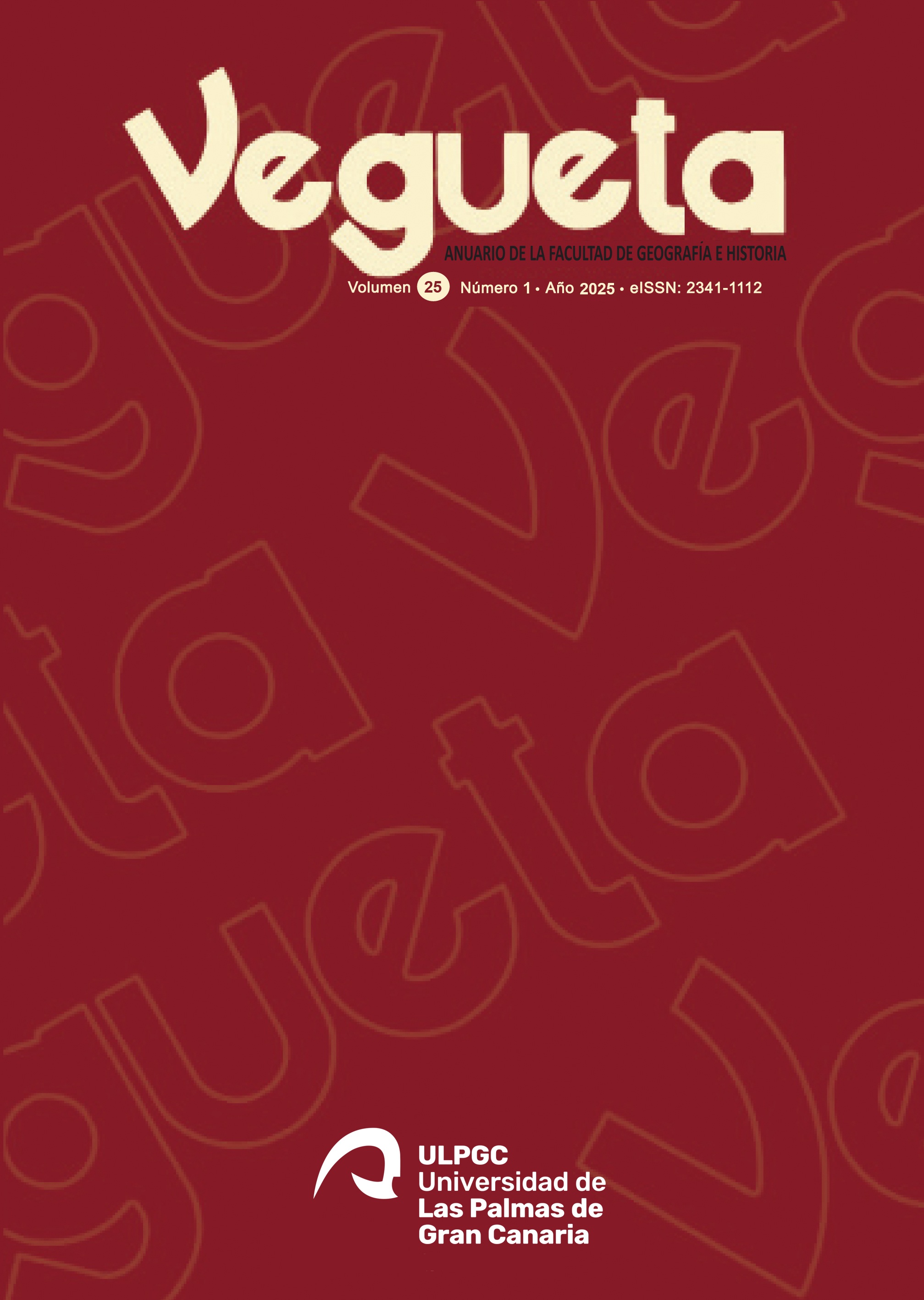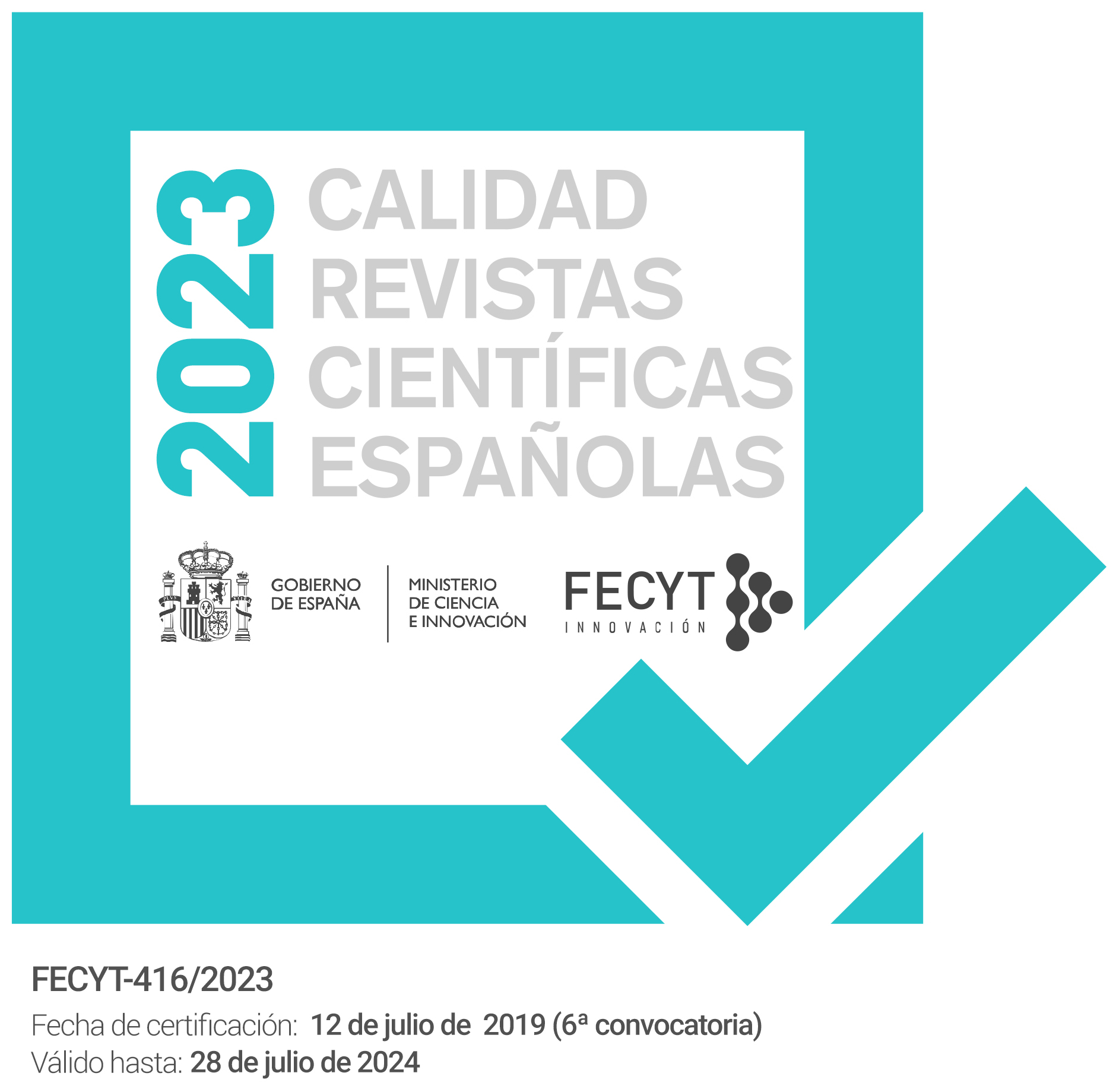Antonio Tovar and the university cultural press during the postwar Salamanca: Cátedra (1942-1945), Lazarillo (1943-1944) y Trabajos y Días (1946-1951)
DOI:
https://doi.org/10.51349/veg.2025.1.14Keywords:
Tovar, magazine, University, culture, SalamancaAbstract
This article deals with some of the cultural publications of the University of Salamanca environment edited during the early post-war period, in which Antonio Tovar (rector of the university between 1951 and 1956) played a leading role. The recovery of a part of the Generation of ‘98, that had been condemned to ostracism, participated in the awakening of some student community members. We will understand the role that magazines Cátedra (1942-1945), Lazarillo (1943-1944) and Trabajos y Días (1946-1951) had in this movement through a review of the primary sources (the magazines) and cultural studies of the period.
Downloads
References
ALDECOA, I. (1944): Trilogía: Hoffmann, Núñez de Arce, Poe. Cátedra, 5: 4.
ALONSO, D. (1943): A un poeta muerto. Lazarillo, 2: 8-9.
ÁLVAREZ GARCÍA, F.J. (2013): Música y cafés salmantinos a comienzos del s. XX, a través de la prensa local. El futuro del pasado, 4: 459-480. Disponible en https://revistas.usal.es/uno/index.php/1989-9289/article/view/24765/23470
CHOMSKY, N.; RAMONET, I. (1995): Cómo nos venden la moto. Icaria, Barcelona.
COBOS, A. de los (1943): Dos hombres buenos en Castilla. Lazarillo, 2: 7.
CORTÉS Y VÁZQUEZ, L. L. (1946): En torno a San Pedro de la Nave. Trabajos y Días, 1: 23-24.
CORTÉS Y VÁZQUEZ, L. L. (1950): Carta de París. Trabajos y Días, 12: 26.
EDITORIAL (1951): Nuestros trabajos y nuestros días. Trabajos y Días, 15: 1.
GIMÉNEZ CABALLERO, E. (1943): Lazarillo se ha levantado y anda otra vez por España. Lazarillo, 1: 4.
G.M. (1946): Cine, pero poco: Los últimos de Filipinas y El gran vals. Trabajos y Días, 1: 16-17.
(1947): El cine europeo. Trabajos y Días, 5: 16.
GRACIA, J. (1994): Crónica de una deserción. Ideología y literatura en la prensa universitaria del franquismo (1940-1960). Editorial PPU, Barcelona.
GRACIA, J. (2004): La resistencia silenciosa. Fascismo y cultura en España. Anagrama, Barcelona.
GRACIA, J. (2006): Estado y Cultura. El despertar de una conciencia crítica bajo el Franquismo (1940-1962). Presses Universitaires du Mirail, Barcelona.
GRACIA, J. (2008): La vida rescatada de Dionisio Ridruejo. Anagrama, Barcelona.
JUAN-PENALVA, J. (2005): La revista Escorial: poesía y poética. Trascendencia literaria de una aventura cultural en la alta posguerra. Universidad de Alicante (Tesis Doctoral). Disponible en http://rua.ua.es/dspace/handle/10045/10413
JORGE, D. (2016): Inseguridad colectiva: la Sociedad de Naciones, la Guerra de España y el fin de la paz mundial. Tirant Humanidades, Valencia.
JULIÁ, S. (2004): Historia de las dos Españas. Madrid: Taurus, Madrid.
MARTÍN PATINO, D. (1942): Pensamientos de un día gris. Cátedra, 2: 9.
NEGT, O. (2004): ¿Qué es eso de la cultura?. María Ábalos (trad.). Revista de Occidente, 282: 15-35. Disponible en https://ortegaygasset.edu/wp-content/uploads/2018/07/282Oscar_Negt.pdf
PECOURT, J. (2006): El campo de las revistas políticas bajo el franquismo. Papers: Revista de Sociología, 81: 205-228. Disponible en https://ddd.uab.cat/pub/papers/02102862n81/02102862n81p205.pdf
PÉREZ, R. (1945a): El antiespañolismo en el cine. Cátedra, 10:16.
PÉREZ, R. (1945b): Apología del cine. Cátedra, 11: 12.
PÉREZ, R. (1945c): Ensayo sobre Charlot. Cátedra, 12: 15.
PÉREZ BOWIE, J.A. (2005): Lazarillo. Arte y letras: Una efímera aventura cultural (1943-1944), en M. J. Ramos (coord.), Revistas literarias españolas del siglo XX (vol. II). Ollero y Ramos, Madrid, pp. 69-86.
RAMOS RUIZ, I. (2009): Profesores, alumnos y saberes en la Universidad de Salamanca en el rectorado de D. Antonio Tovar (1951-1956). Ediciones Universidad de Salamanca, Salamanca.
RAUTA, A. (1947): Cine en lugar de crónica. Trabajos y Días, 6: 14.
ROMERO LÓPEZ, D. (1995): Un tributo al análisis de las revistas españolas de postguerra: Trabajos y Días (Salamanca, 1946-1951). Revista de Estudios, 35-36: 243-272. Disponible en http://www.lasalina.es/documentacion/revistadeestudios/45-2-2.pdf
SÁNCHEZ RUIPÉREZ, M. (1995): Dos figuras señeras de la Universidad de Salamanca en el siglo XX: Ramos Loscertales y Tovar. Asociación de Antiguos Alumnos de la Universidad de Salamanca, Salamanca. Disponible en https://www.cervantesvirtual.com/obra/antonio-tovar-y-la-universidad-de-salamanca/
SANTOS TORROELLA, R. (1943a): La soga en casa del ahorcado. Lazarillo, 2: 2.
SANTOS TORROELLA, R. (1943b): Pascual Duarte. Lazarillo, 2: 14.
SOLER SERRANO, J. (1977): A fondo: Entrevista a Antonio Tovar. RTVE, Madrid. Disponible en https://www.youtube.com/watch?v=G8eoIYu_8MA
TIERNO GALVÁN, E. (1981): Cabos sueltos. Bruguera, Barcelona.
TOVAR, A. (1942): Sección de consultas. Cátedra, 1:12.
TOVAR, A. (1943a): Consultorio: ¿Para qué sirve la carrera de letras?. Cátedra, 2: 13.
TOVAR, A. (1943b): Editorial. Otra vez Lazarillo. Lazarillo, 1:2.
TOVAR, A. (1944). Editorial. Lazarillo, 3-4: 3.
TOVAR, A. (1946): Presentación. Trabajos y Días, 1:3.
TOVAR, A. (1953): Lección del Rector de Salamanca. Alcalá, 28-29: 3.
TUSELL, J. (1984): Franco y los católicos. La política interior española entre 1945 y 1957. Alianza Editorial, Madrid.
VERTOV. D. (2011): Memorias de un cineasta bolchevique. Joaquín Jordá (trad.). Capitán Swing, Madrid.
VILLAR, A. del (1995): Poesía (o biografía) completa de Gerardo Diego. Cuadernos Hispanoamericanos, 539-540: 285-290.
ZORITA, A.C. (1975): Este otro Dámaso Alonso: Pervivencia soterraña del poeta “puro”. Boletín de la Institución Fernán González, 184: 459-465. Disponible en https://riubu.ubu.es/handle/10259.4/1542?locale-attribute=de
Downloads
Published
Issue
Section
License
Copyright (c) 2024 Manuel Herrería Bolado

This work is licensed under a Creative Commons Attribution-NonCommercial-NoDerivatives 4.0 International License.
The articles are open access distributed under the terms of the Creative Commons Attribution-NonCommercial-NoDerivatives (CC BY-NC-ND) Spain 4.0 license. Authors who publish in this journal agree with the following terms:
a) Authors retain the copyright and guarantee the journal the right to be the first publication of the work as well as licensed under a Creative Commons Attribution License that allows others to share the work with a recognition of the authorship of the work and the Initial publication in this magazine.
b) Authors may separately establish additional agreements for the non-exclusive distribution of the version of the work published in the journal (for example, place it in an institutional repository or publish it in a book), with recognition of its initial publication in this magazine.
c) Authors are allowed and encouraged to disseminate their work electronically (for example, in institutional repositories or on their own website) before and during the submission process, as it may result in productive exchanges, as well as a earliest and largest citation of published works (See The Effect of Open Access).




